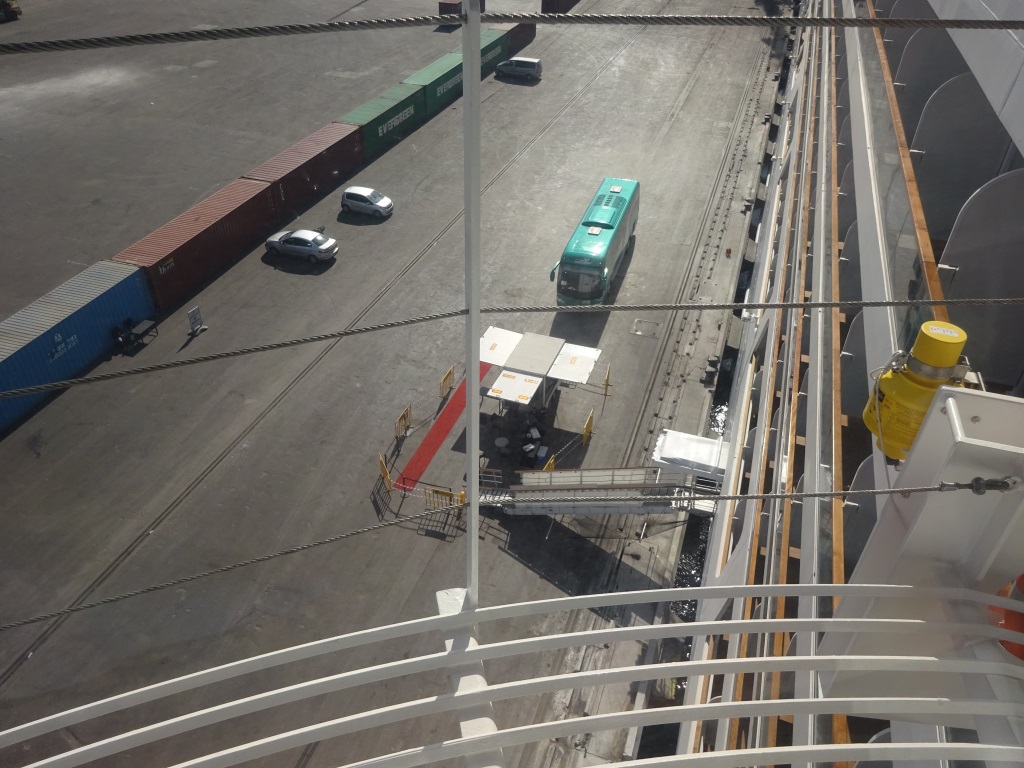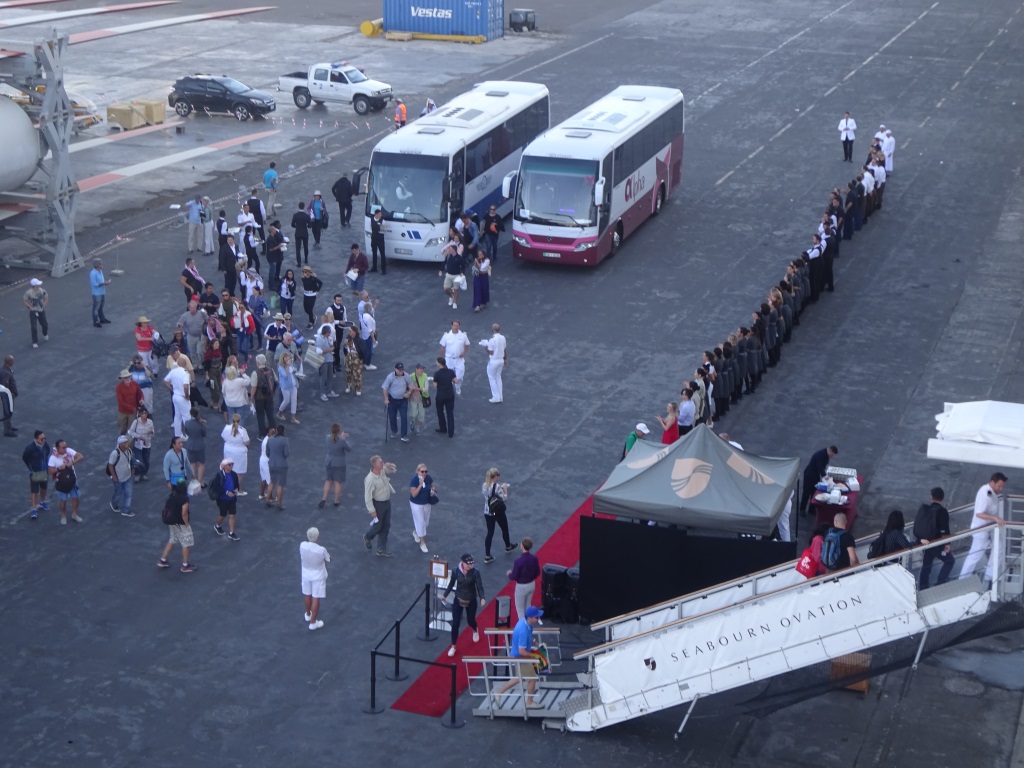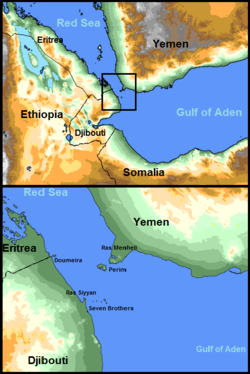Together with the Seven Seas Navigator we sailed along the coast towards Ashdod with the idea to arrive early as the clearance operations take time here. However the Navigator had to wait and we had to stay behind her and then she got clearance first. So the plan of sending the guests ashore, bright and early, did not exactly work out. We were still docked ahead of time but then we had to wait for the authorities to walk from one ship to the other, and once done they could finally start comparing all our faces with all our passports. (Everybody had to go through, Guests and Crew) Once that was accomplished you received a stamped landing card for going ashore.

Extra, Extra Security at the gangway. This to complement our own scanning equipment inside.
When going off there was a mobile scanning post set up at the gangway and everybody was subject to a scan and a handbag inspection before they could board the coaches for their tours. Luckily we are staying until 23.00 hrs. tonight so the late departure will not result in a reduction of the tour time. As can be expected security is very tight here in the various ports and both cruise ships are surrounded by a row of containers with only a small entrance / exit for the coaches and the shuttlebuses. Continue reading


